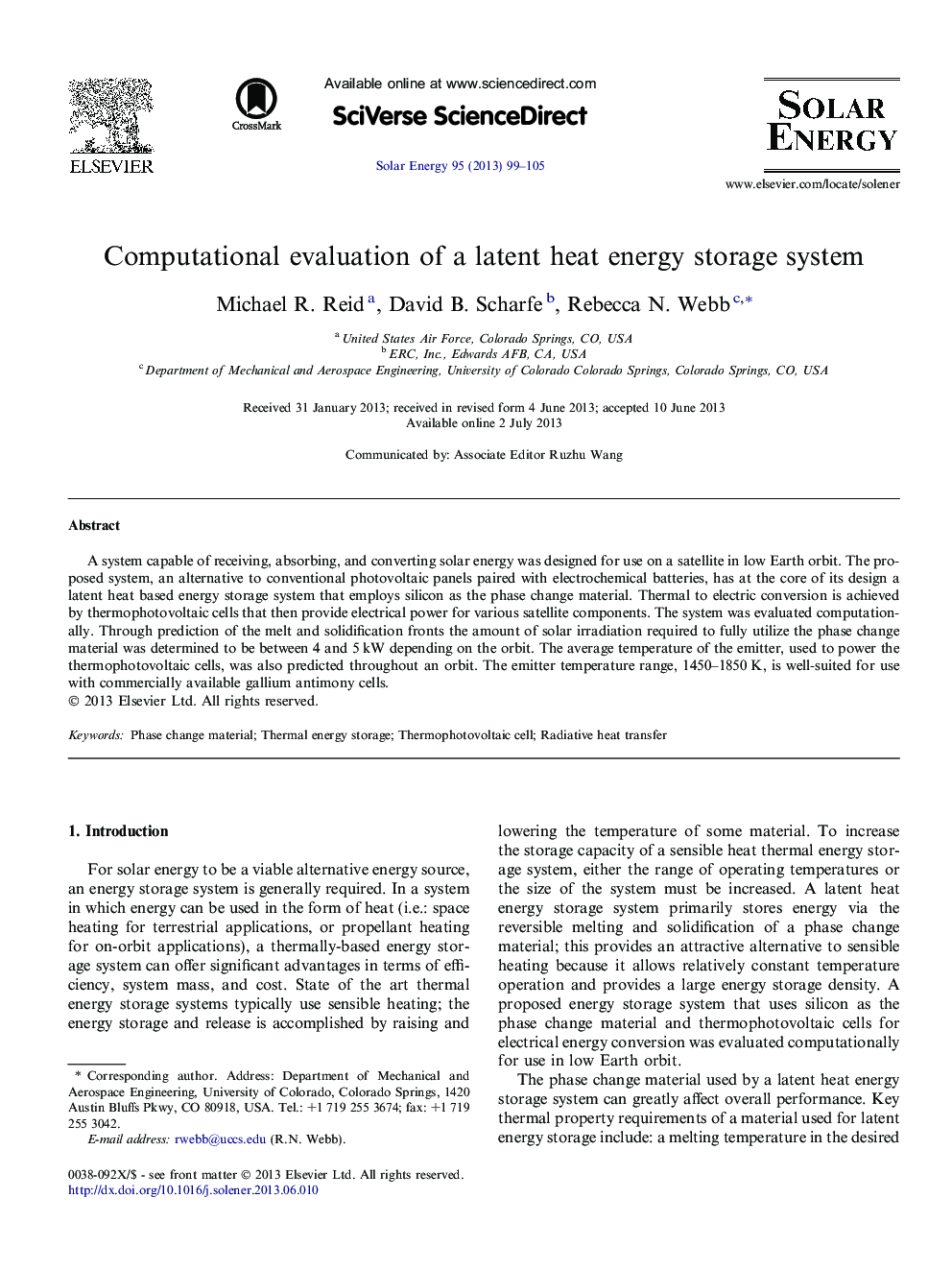| Article ID | Journal | Published Year | Pages | File Type |
|---|---|---|---|---|
| 1550574 | Solar Energy | 2013 | 7 Pages |
A system capable of receiving, absorbing, and converting solar energy was designed for use on a satellite in low Earth orbit. The proposed system, an alternative to conventional photovoltaic panels paired with electrochemical batteries, has at the core of its design a latent heat based energy storage system that employs silicon as the phase change material. Thermal to electric conversion is achieved by thermophotovoltaic cells that then provide electrical power for various satellite components. The system was evaluated computationally. Through prediction of the melt and solidification fronts the amount of solar irradiation required to fully utilize the phase change material was determined to be between 4 and 5 kW depending on the orbit. The average temperature of the emitter, used to power the thermophotovoltaic cells, was also predicted throughout an orbit. The emitter temperature range, 1450–1850 K, is well-suited for use with commercially available gallium antimony cells.
•A latent heat energy storage system for use on a satellite in low Earth orbit was evaluated computationally.•The amount of solar irradiation required to fully utilize the phase change material was quantified.•The average temperature of the thermophotovoltaic emitter was predicted.
